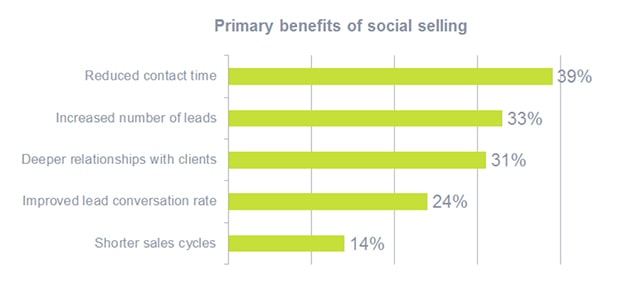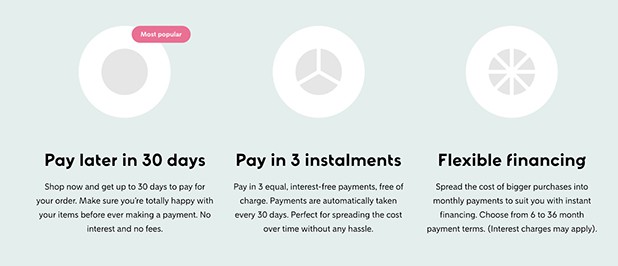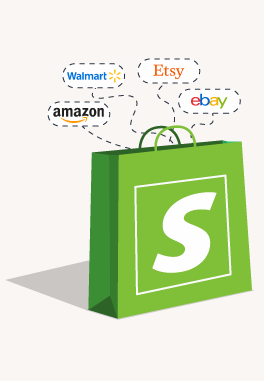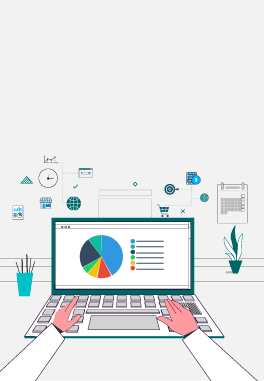Whether you’re running a DTC ecommerce store, or selling your products through distributors, it’s time to think closely about the online retail trends that matter right now.
In this post, we’re going to look at the strategies, trends, and best practices that drive ecommerce right now. Some of them you might’ve tried, others, however, might be new to you. However, there’s never been a better time to start improving the way you run your business and make money.
You’ll learn:
- Why ecommerce retailers are moving towards omnichannel experiences to boost sales
- How social integrations make it easier to make sales off-platform
- The rise in personalization leads to better customer relationships.
- How the new wave of “try before you buy” is proving a success for stores.
Omnichannel
Omnichannel e-commerce allows your customers to have a unified channel-based approach to your store. This means, whether they’re buying from your store, your social media, or your retail partners, the experience is the same.
Omnichannel experiences are hard to get right. You need to get your systems set up in a way that you can track orders, and stock amounts. For example, I might place my initial order online but want to pick up the item in-store. Unless your systems are up to date, you run the risk of someone thinking their product is in stock, only to get to the store to find that it’s not.
The image above shows data highlighting how shoppers spend their time online. With shoppers actively using different channels to buy their products, if you’re not adopting an omnichannel experience, you’re running the risk of losing customers who choose to buy on a platform or channel you’re not on.
Automation
E-commerce automation can significantly benefit your business in many aspects. Such as marketing, communication, fulfillment, and follow-ups. As an e-commerce business owner, you should be on alert about how you’re spending your time.
It’s important to focus on the bigger picture. Because little matters end up taking up most of your time. Let yourself start using e-commerce automation tools. You will be able to automate specific repetitive tasks. This frees up your time and allows you to focus on your company’s growth!
One of the best benefits of e-commerce automation is marketing analysis. This enables you to handle reports with one click. You can identify where things are going well and where they are out of control in a very short time.
In addition to all that, you can make budget decisions based on this analysis. Also, you can present clear data to your customers. Visually appealing, easy-to-understand reports can help you.
Automation follows competitors systematically. It reports daily price changes of competitor products. So, it becomes much easier for you to follow important details regularly. This way you can step into a more strategic role as a business owner by automating tasks that take up a lot of your time.
That’s very important to track the price changes of competitor products for many reasons. Helps you to determine the best price to make your product more attractive. Black Friday is a very good example. Countless discounts and price changes make it difficult to follow possible outcomes. That’s what repricing automation is for. It monitors the prices and offers you the most ideal option for your business.
Social commerce & integration
How many times do you browse social media and find items you might like to buy? Most consumers follow at least one brand on their social channels giving brands a good opportunity to use them as a selling channel.
Social networks like Instagram now allow brands to sell directly from the platform.
Customers can browse your items direct from your social channels, look at your lifestyle images and then make a purchase without having to leave the app, go to the website, try and find the item and buy.
This seamless approach has a range of benefits.

Not only does it reduce the contact time but it increases the number of leads. By sharing your images with all your social followers you can catch the attention of potential buyers who might not have seen the products or browsed your store.
You have a shorter sales cycle in that your customers skip the browse section and just see the items they might like to buy.
If you’re going to start implementing social selling into your e-commerce store be sure to remember that your social channels aren’t just there for selling. If you turn your entire Instagram feed into a sales page, you’re going to lose followers. People follow you on Instagram for a reason and usually, that’s because they like your brand, the style of photos, and the ethos you have. Weave your social selling into your normal posts so as to not alienate your audience who aren’t yet ready to make a purchase.
Personalisation
Creating an e-commerce store is becoming easy for anyone to do. With plug-and-play programs like Shopify, anyone can think of a product and start selling to the public. But with the rise in e-commerce stores comes the need for vendors to start thinking more carefully about the level of personalisation they offer their shoppers.
Personalization is key if you want to differentiate your store as well as increase your customer retention.
This online retail trend is not only good for your communications (email) but also for your website too.
In this email, Nike has data on its customers that reminds them when it’s their birthday. On their birthday, they not only say happy birthday, but they offer a specific 25% discount. If you want to implement this retail trend, think about the ways (other than email) that you can show personalization.
You might try and vary prices based on location. Or perhaps, if you have cookie data, you can update the website based on their previous browsing history.
Buy now, pay later
Often, you want a new outfit or a new item for a specific event, but at the current point, you don’t have enough money. Maybe it’s a few days before payday or maybe you’re waiting for your money to come in. Either way, a new trend is to give consumers the chance to buy things without having direct funds available to them.
Buying products on credit is not a new thing. People have always had credit cards where they’ve been able to make a purchase and pay for it at a later date. But the rise in technologies like Klarna allows retailers to get on board too.
Klarna allows you to buy items of your choice and pay at a later date. Shoppers have three options. They can pay in full within 30 days (similar to the traditional credit card model). They can pay in 3 equal (interest-free). Or they can choose their financing, however, this does come with interest and can be paid anytime from 6 to 36 months.

What’s interesting about Klarna is how they connect and cooperate with the retailers themselves. On their website, they have a store directory that allows shoppers to browse the stores that allow late payments.
This partnership between the lender and the retailer is one of the newest trends that creates the full-circle e-commerce effect.
In a similar way, Amazon is trying its own way to allow shoppers more choice about what items they want before they pay.

When buying fashion items from specific retailers, you’re able to pick between 2 and 6 items. They send them to your house (prime members get faster delivery).
You can try the items on at home and within 7 days, you have the option of keeping the items or returning them.
The best part is? You only pay for the items you keep.
This new wave of giving shoppers freedom and choice is great for increasing the likelihood of them purchasing more items. With many shoppers offering refunds after 14 days, some shoppers refrain from trying too many things if they’re short of cash because waiting 14 days for a refund is too long.
However, with these new systems, that isn’t a concern. We predict more online retailers will move to this method of payment to entice more shoppers.
Takeaways
Despite the closure of many brick-and-mortar retail stores, online retail is very much booming. With the advancement of technology and DTC retailers, there has never been a better time to get started with e-commerce.
What online retail trends have you noticed in 2022? Leave a comment below.
e-commerce marketing


Thanks For Sharing an inspirational article. Your Blog all Post information is very unique and good for the reader because when I have read your blog looks very impressive for me. I want to say thanks for share these actionable tips. Most importantly I have bookmark your site for future updates.
Buy now and pay later is a trend now in the ecommerce sector and helps to build customer's trust. Very good piece of content based on some market analysis facts. Much appreciated.
Thanks a lot, we're glad to be helpful!
That's good to know, and I thank you for giving me this really helpful information.